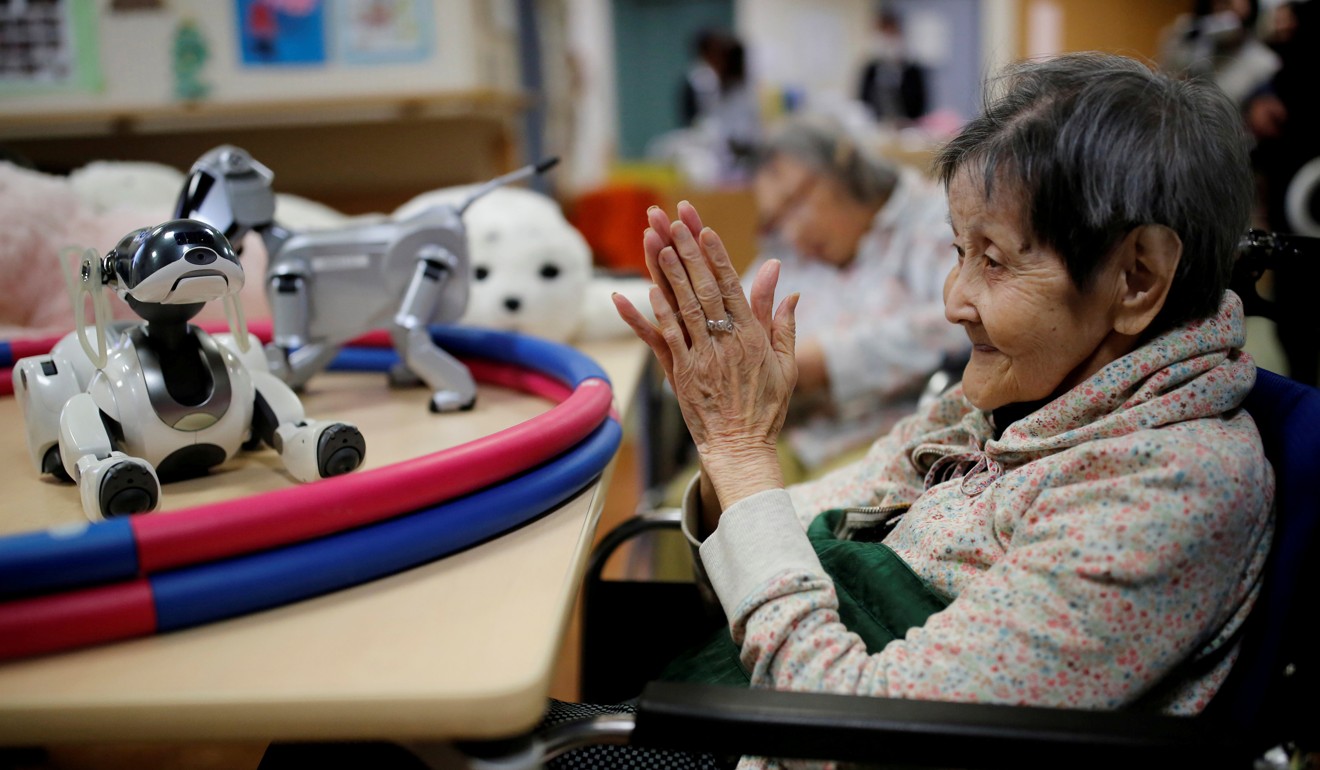
World’s most aged society just got older – Japan sets new records
- The elderly now make up more than 28 per cent of the population and the figure is expected to hit 30 by 2025
- More seniors than ever before are staying in the world of work as the country looks for ways to counter a deepening labour shortage
Japan’s elderly accounted for 28.4 per cent of its population and 12.9 per cent of its labour force in 2018, both record highs, government data released on Sunday showed.
The number of citizens aged 65 or older in Japan, which has the world’s oldest population, stood at 35.88 million, up 320,000 from a year earlier, according to the Internal Affairs and Communications Ministry, which released the figures ahead of the country’s Respect for the Aged Day on Monday.
The ratio of seniors in Japan remained well above the 23 per cent in Italy, the world’s second most aged society.
The number of Japanese aged 90 or older reached 2.31 million, including 70,000 centenarians.
The National Institute of Population and Social Security Research projects Japan’s elderly will make up 30 per cent of the population in 2025 and 35.3 per cent in 2040.
The proportion of seniors with jobs increased for the 15th consecutive year as the country faces a deepening labour shortage. Of the 8.62 million seniors with jobs, 3.5 million were women.
The biggest employer of seniors was the wholesale and retail industry, with 1.27 million elderly workers, followed by agriculture and forestry with 1.07 million.

Japan is experiencing a “demographic crisis” as its population ages and deaths outnumber births. But as the native population shrinks, the number of resident foreigners has moved steadily in the opposite direction and has been propelled to new heights by the labour shortage. There were 2.66 million foreigners living in Japan as of July – an increase of about 170,000 from a year earlier, according to statistics from the ministry.
After five consecutive years of increases, these foreigners accounted for 2.09 per cent of the population. The newcomers are mostly from other parts of Asia: China accounts for the single largest immigrant population, followed by South Korea and Vietnam.
Worse than Japan: how China’s looming demographic crisis will doom its economic dream
The rise in the pool of foreigners comes even as Japan’s overall population experiences a steady decline. At the start of 2019 it stood just below 124 million – 433,239 fewer people than the previous year. It was the 10th straight year-on-year decrease and the steepest decline since statistics were first collated in 1968. There were 921,000 births in 2018, coming in below the 1 million threshold needed to sustain the population for the third consecutive year. Conversely, just over 1.36 million people died, the sixth consecutive increase.
The number of foreign residents is expected to increase with new employment regulations that took effect in April. Japan now permits more foreigners to live and work in Japan – albeit under fairly strict requirements that they return to their home country at the end of their contract instead of settling permanently.
Many will be working in food services, cleaning, construction, agriculture, fishing, vehicle repair and operating industrial machinery, while individuals with recognised skills will be eligible for a broader range of employment. Some 345,000 working visas are expected to be issued in the next five years, but this will still not be enough to address the labour shortfall in certain sectors.
Additional reporting by SCMP

